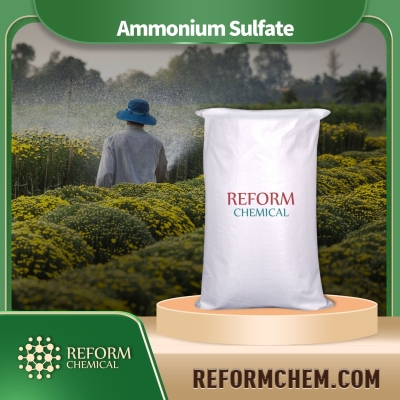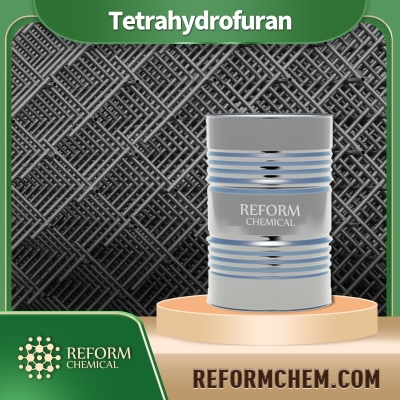-
Categories
-
Pharmaceutical Intermediates
-
Active Pharmaceutical Ingredients
-
Food Additives
- Industrial Coatings
- Agrochemicals
- Dyes and Pigments
- Surfactant
- Flavors and Fragrances
- Chemical Reagents
- Catalyst and Auxiliary
- Natural Products
- Inorganic Chemistry
-
Organic Chemistry
-
Biochemical Engineering
- Analytical Chemistry
-
Cosmetic Ingredient
- Water Treatment Chemical
-
Pharmaceutical Intermediates
Promotion
ECHEMI Mall
Wholesale
Weekly Price
Exhibition
News
-
Trade Service
Most of the pesticide prices have seen a significant increase in recent times.
Among them, the market demand for pesticides has greatly increased, which is the main reason why many people believe that the recovery of the pesticide market is expected.
Point of view
.
In the research report, it was pointed out that due to the continued downturn in global food prices, the demand for pesticides has grown slowly in recent years; at the same time, disorderly production capacity has led to a general overcapacity in the domestic and foreign pesticide industries, and the operating rate of a large number of domestic pesticide varieties fluctuates around 50%; The continuously falling prices of pesticides have kept many production companies below the profit and loss line, which has led to production companies choosing to reduce operations and actively destocking to reduce their production costs
.
Normally, at the end of the second quarter of each year, the inventory of pesticide companies reaches the highest level in the whole year
.
However, statistics show that from the first to fourth quarters of 2016, domestic pesticide inventories increased by -16.
1%, 1.
1%, -7.
2%, and -9.
3% respectively from the beginning of the year, which were far lower than previous years, and the effect of destocking by pesticide companies was obvious
.
At the same time, statistics also show that since 2014, the production and sales rate of domestic chemical pesticide products has basically maintained above 100%
.
Among them, in the first quarter of 2014, the first quarter of 2015 and the first quarter of 2016, the domestic production and sales rates of chemical pesticides were 106%, 103.
8% and 104.
6%, respectively
.
Similar to China, from 2014 to 2015, the stocks of international agrochemical giants also declined to varying degrees
.
Financial data show that in 2014, Monsanto (MON.
N), Syngenta (SYT.
N), DuPont (DD.
N), and BASF (BFA.
L) had inventories at the end of the reporting period of US$3.
597 billion, US$4.
861 billion, and US$7.
841, respectively.
Billion U.
S.
dollars and 11.
266 billion euros; in 2015, the inventory of the above four companies at the end of the reporting period fell to 3.
496 billion U.
S.
dollars, 4.
345 billion U.
S.
dollars, 6.
14 billion U.
S.
dollars and 9.
693 billion euros.
.
Since 2010, China’s pesticide industry has shown distinctive export-oriented characteristics.
At the same time, the growth rate of investment in fixed assets by overseas giants has slowed down greatly, and there has even been a contraction in fixed assets; In the fine division of labor, an economic model has gradually formed in which foreign innovative pesticide companies conduct research and development, while Chinese companies customize or imitate the production of pesticide original drugs and export them
.
With the destocking of multinational agrochemical giants basically completed, the restocking market has begun to drive overseas demand to pick up
.
Statistics show that in 2016, China's pesticide technical exports reached 1.
4 million tons, a year-on-year increase of 19.
2%, setting a record high
.
Among them, in the third quarter of 2016, the cumulative export volume of pesticides increased by 36% year-on-year, and the fourth quarter increased by 40% year-on-year
.
Specifically, in 2016, domestic herbicide exports increased by 17.
37% year-on-year, pesticide exports increased by 320.
25% year-on-year, and fungicides exports increased by 28.
96% year-on-year
.
In January 2017, the export volume of domestic herbicides increased by 47.
05% year-on-year, the export volume of pesticides increased by 42.
55% year-on-year, and the export volume of fungicides increased by 16.
90% year-on-year
.
The improvement of the international agricultural product market will help form a bottom support for the demand for pesticides
.
According to the research report, due to the relatively high correlation between the price of crude oil and the price of agricultural products, driven by the increase in crude oil prices, the prices of agricultural products are expected to bottom out in 2017, and the demand for pesticides will increase; from the prices of major agricultural products From a point of view, the prices of wheat, barley, corn, rice, and peanuts are close to their 10-year price bottoms and are likely to bottom out in the future.
The prices of soybeans, rapeseed oil, sugar, cotton, rubber and other agricultural products will be in the near future.
There has been a rebound, indicating that the bottom of the price is basically proven
.
Among them, the market demand for pesticides has greatly increased, which is the main reason why many people believe that the recovery of the pesticide market is expected.
Point of view
.
In the research report, it was pointed out that due to the continued downturn in global food prices, the demand for pesticides has grown slowly in recent years; at the same time, disorderly production capacity has led to a general overcapacity in the domestic and foreign pesticide industries, and the operating rate of a large number of domestic pesticide varieties fluctuates around 50%; The continuously falling prices of pesticides have kept many production companies below the profit and loss line, which has led to production companies choosing to reduce operations and actively destocking to reduce their production costs
.
Normally, at the end of the second quarter of each year, the inventory of pesticide companies reaches the highest level in the whole year
.
However, statistics show that from the first to fourth quarters of 2016, domestic pesticide inventories increased by -16.
1%, 1.
1%, -7.
2%, and -9.
3% respectively from the beginning of the year, which were far lower than previous years, and the effect of destocking by pesticide companies was obvious
.
At the same time, statistics also show that since 2014, the production and sales rate of domestic chemical pesticide products has basically maintained above 100%
.
Among them, in the first quarter of 2014, the first quarter of 2015 and the first quarter of 2016, the domestic production and sales rates of chemical pesticides were 106%, 103.
8% and 104.
6%, respectively
.
Similar to China, from 2014 to 2015, the stocks of international agrochemical giants also declined to varying degrees
.
Financial data show that in 2014, Monsanto (MON.
N), Syngenta (SYT.
N), DuPont (DD.
N), and BASF (BFA.
L) had inventories at the end of the reporting period of US$3.
597 billion, US$4.
861 billion, and US$7.
841, respectively.
Billion U.
S.
dollars and 11.
266 billion euros; in 2015, the inventory of the above four companies at the end of the reporting period fell to 3.
496 billion U.
S.
dollars, 4.
345 billion U.
S.
dollars, 6.
14 billion U.
S.
dollars and 9.
693 billion euros.
.
Since 2010, China’s pesticide industry has shown distinctive export-oriented characteristics.
At the same time, the growth rate of investment in fixed assets by overseas giants has slowed down greatly, and there has even been a contraction in fixed assets; In the fine division of labor, an economic model has gradually formed in which foreign innovative pesticide companies conduct research and development, while Chinese companies customize or imitate the production of pesticide original drugs and export them
.
With the destocking of multinational agrochemical giants basically completed, the restocking market has begun to drive overseas demand to pick up
.
Statistics show that in 2016, China's pesticide technical exports reached 1.
4 million tons, a year-on-year increase of 19.
2%, setting a record high
.
Among them, in the third quarter of 2016, the cumulative export volume of pesticides increased by 36% year-on-year, and the fourth quarter increased by 40% year-on-year
.
Specifically, in 2016, domestic herbicide exports increased by 17.
37% year-on-year, pesticide exports increased by 320.
25% year-on-year, and fungicides exports increased by 28.
96% year-on-year
.
In January 2017, the export volume of domestic herbicides increased by 47.
05% year-on-year, the export volume of pesticides increased by 42.
55% year-on-year, and the export volume of fungicides increased by 16.
90% year-on-year
.
The improvement of the international agricultural product market will help form a bottom support for the demand for pesticides
.
According to the research report, due to the relatively high correlation between the price of crude oil and the price of agricultural products, driven by the increase in crude oil prices, the prices of agricultural products are expected to bottom out in 2017, and the demand for pesticides will increase; from the prices of major agricultural products From a point of view, the prices of wheat, barley, corn, rice, and peanuts are close to their 10-year price bottoms and are likely to bottom out in the future.
The prices of soybeans, rapeseed oil, sugar, cotton, rubber and other agricultural products will be in the near future.
There has been a rebound, indicating that the bottom of the price is basically proven
.






